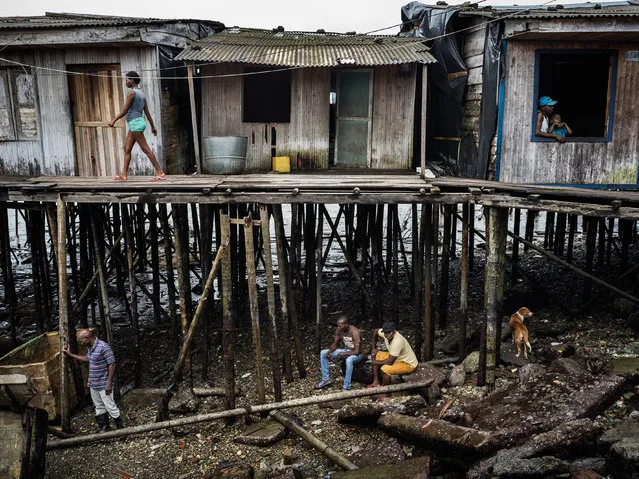
As Colombia votes in a presidential runoff election on Sunday Colombians daily struggles in the aftermath of 50 years of conflict are captured by the Danish photographer Mads Nissen, who has documented the civil war in Colombia since 2010, in his book “We Are Indestructible”. Featuring the government army, guerrilla rebels and paramilitary groups, Nissen’s work provides a portrait of a war-torn country navigating the complexities of newfound peace. Here: The slum area Puente Nayero is home to more than 1,200 families, of which an estimated 95% have been forcibly displaced from their homes due to the conflict. With nearly 6 million displaced people, Colombia is one of the countries with most displacements in the world. The slum areas are dominated by paramilitary gangs who extort and oppress the local population. The citizens of Puento Nayero recently found the courage to kick the paramilitaries out and declare their neighbourhood a humanitarian zone. With the support from NGOs and a government program they are now striving to keep it safe. (Photo by Mads Nissen/Politiken/The Guardian/Panos Pictures)
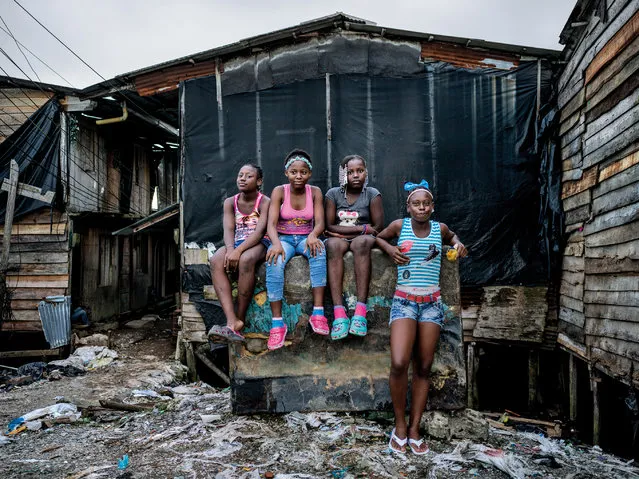
Gina Natalia Garcés, Lesli Mayesi Viueros, Ani Michel Durán, and Eblin Yazury Valenua in Puente Nayero. (Photo by Mads Nissen/Politiken/The Guardian/Panos Pictures)
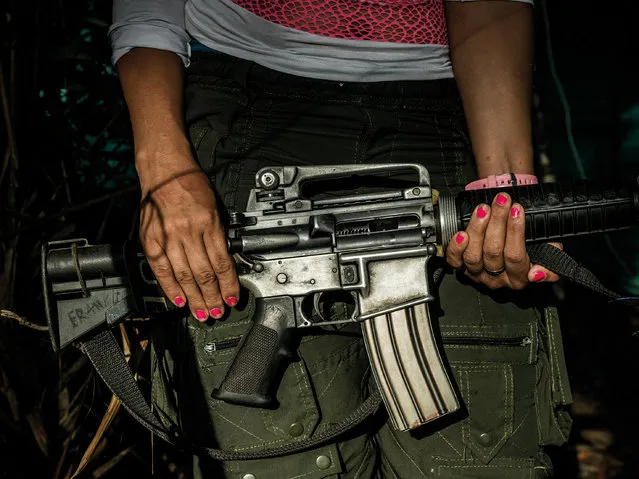
Tatiaya Saens, 23, holds an Armalite AR15 rifle in her hands, she has been with Farc for 10 years. She was born in the countryside where the guerrilla movement had a strong presence. She never knew her father, her mother left her when she was just nine months old, so she grew up in the mother’s cousins’ house where she wasn’t treated well. By joining the guerrilla she eyed an opportunity for a better and more secure future, she says. (Photo by Mads Nissen/Politiken/The Guardian/Panos Pictures)
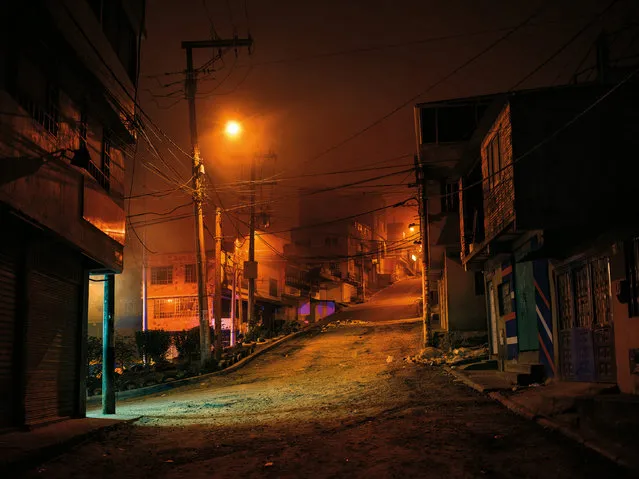
Soacha, South of Bogotá at night. (Photo by Mads Nissen/Politiken/The Guardian/Panos Pictures)
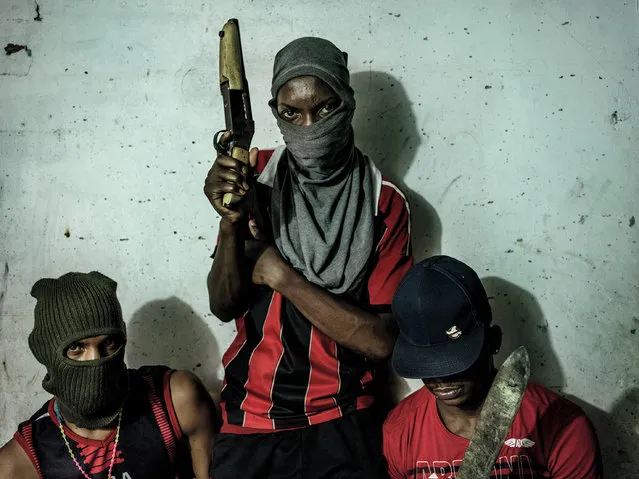
Jon Eider, 19, poses with a homemade gun together with his friends Joan, 22, left, and Brian, right. Jon Eider makes his living from robberies, thefts, drug trafficking and occasionally, killings. At one point Brian was carrying out killings every week to pay for his drug abuse. Now he is struggling to leave gang life behind and even worked for a construction company at one point. Asked about his life in five years from now Jon Eider says: “If I’m not in prison, I’ll definitely be in a coffin. Shot dead”. (Photo by Mads Nissen/Politiken/The Guardian/Panos Pictures)
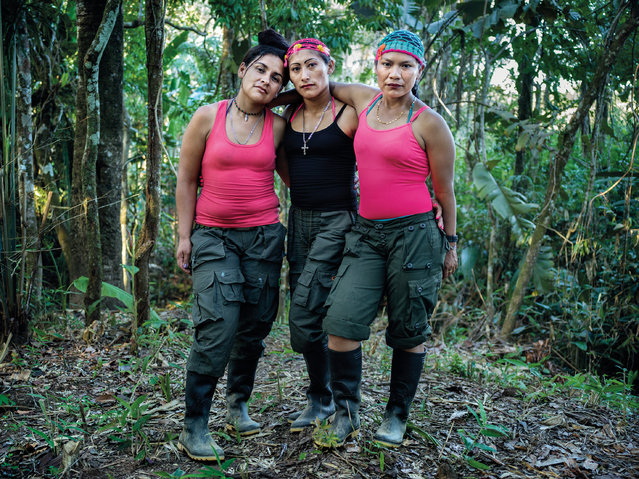
Farc guerrilla fighters Daniela, Yuli and Nancy in the transition period from soldier to civilian in El Diamante camp. (Photo by Mads Nissen/Politiken/The Guardian/Panos Pictures)
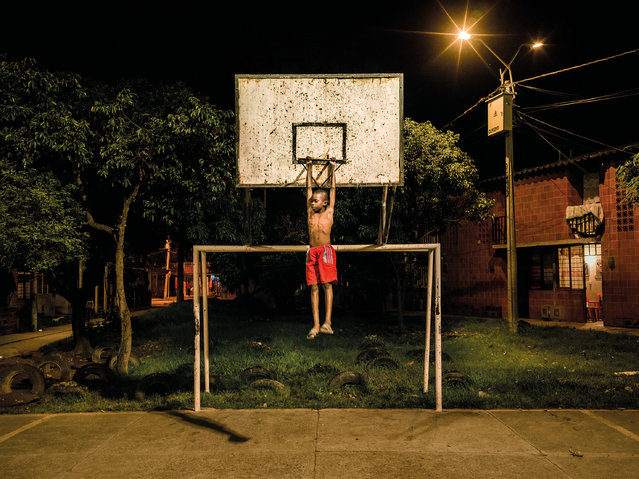
Didiller Angulo, nine, on the basketball court in Potrero Grande. People only moved to Potrero Grande about 10 years but the neighbourhood is considered one of the most troubled in the country. Extreme poverty, unemployment and lack of opportunities have propelled the area into a downward spiral of widespread drug abuse, deadly violence and deeply rooted social problems. (Photo by Mads Nissen/Politiken/The Guardian/Panos Pictures)
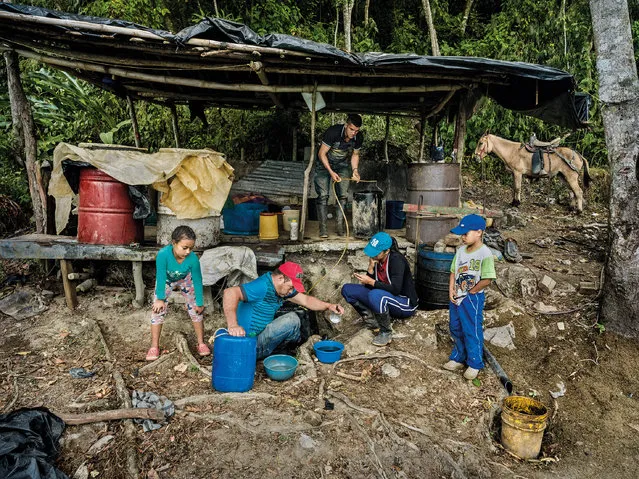
A hidden cocaine laboratory in Santa Rosa de Osos municipality. (Photo by Mads Nissen/Politiken/The Guardian/Panos Pictures)
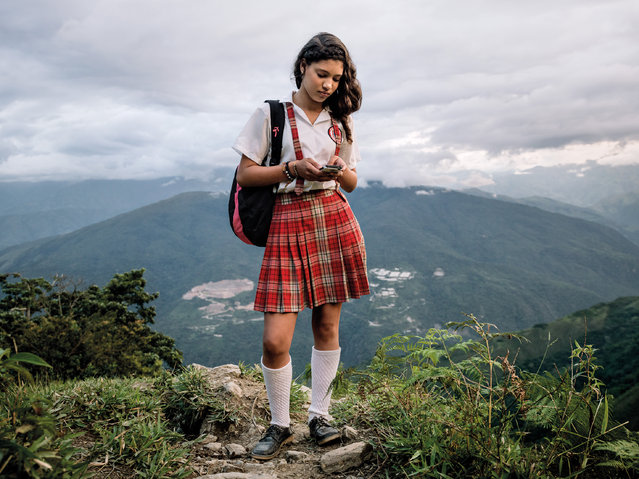
Alexandra Mazo, 12, with her cellphone on her way down the mountain after finishing school. The remote mountain village of Pueblo Nuevo has been highly affected by the armed conflict and direct combat between the national army and Farc guerrillas due to its strategic location and the intensive production on coca crops on the surrounding hillsides. (Photo by Mads Nissen/Politiken/The Guardian/Panos Pictures/The Nobel Peace Center)

The Farc guerrilla fighter Over and the dog Killer pose for a portrait while standing guard. In the past, he would sometimes be fighting every day for half a year. At other times three months could go by without a shot being fired. As part of the peace process, soldiers like Over have moved into UN-controlled areas known as ‘normalisation zones’ where former soldiers stay in camps to receive training to prepare them for civilian life. The peace process is far behind schedule, houses that should have been ready months ago are still under construction, so former fighters are living in tents. (Photo by Mads Nissen/Politiken/The Guardian/Panos Pictures)
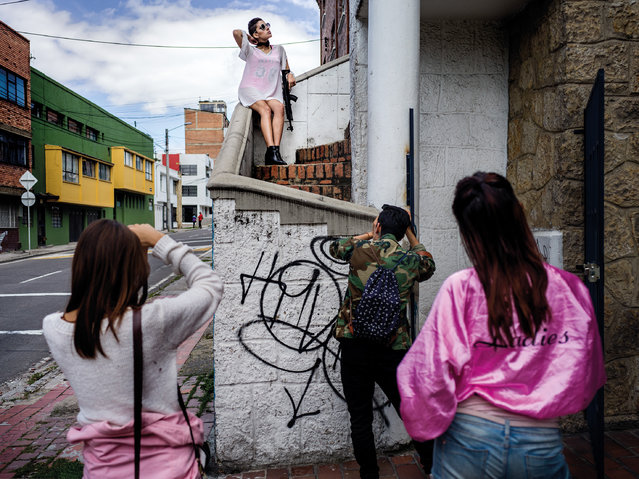
A fashion shoot for a local brand “Hunters Project Agency” in one of the wealthier neighbourhood in the North of Bogota. The model Astrid Sánchez Pinada is holding a plastic AK47 in her hand. “Fashion reflects what’s happening in the world, our country and in our streets”, the fashion photographer explains. (Photo by Mads Nissen/Politiken/The Guardian/Panos Pictures)
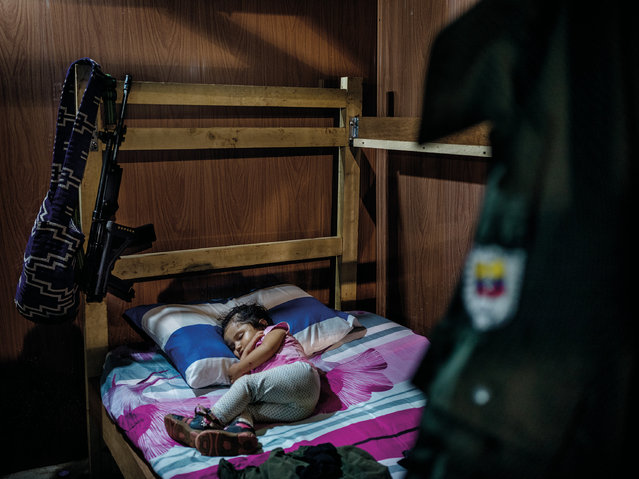
Sara Manuela, two, sleeps in a simple house of a Farc commander surrounded by a Farc uniform and a gun. Her mother and father both hold high positions inside the movement and have only decided to have a child because they believe in the peace process and the prospect of returning to civilian life. (Photo by Mads Nissen/Politiken/The Guardian/Panos Pictures)
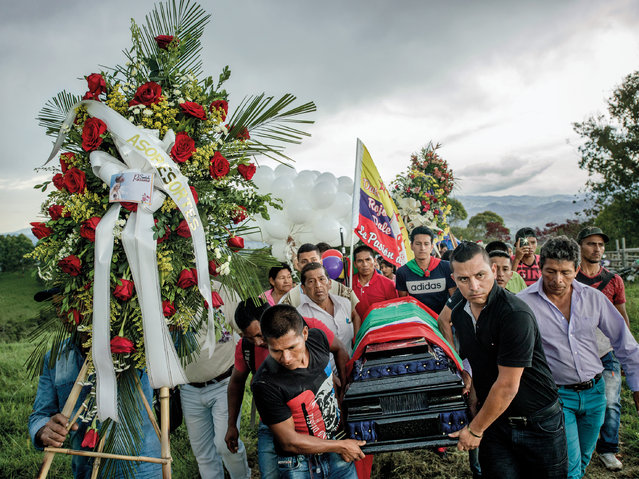
Friends, relatives and members of the local community carry the coffin of Gerson Acosta up a hill to the graveyard. The murders of local civil society leaders pose a serious risk to the peace process. (Photo by Mads Nissen/Politiken/The Guardian/Panos Pictures)
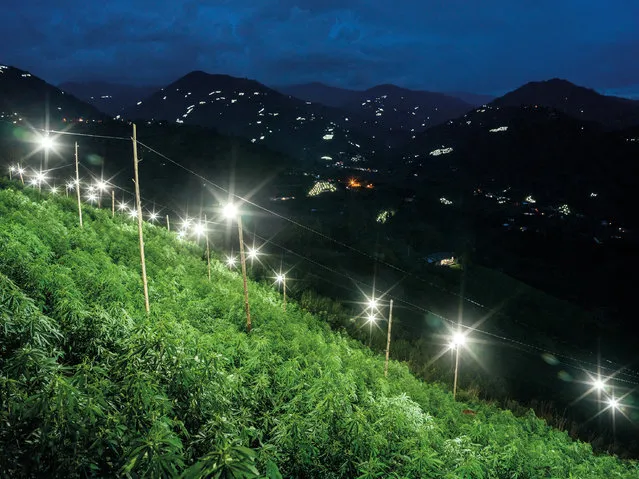
Cannabis, seen here, and coca leaves (for cocaine production) are grown openly and extensively in these mountains only a few hours from the city of Cali. To help stimulate cannabis production artificial lighting is used during the night for the first two months of cultivation. In the background of this image light bulbs can be seen across the landscape, revealing the vast extent of cannabis production in the area. (Photo by Mads Nissen/Politiken/The Guardian/Panos Pictures)
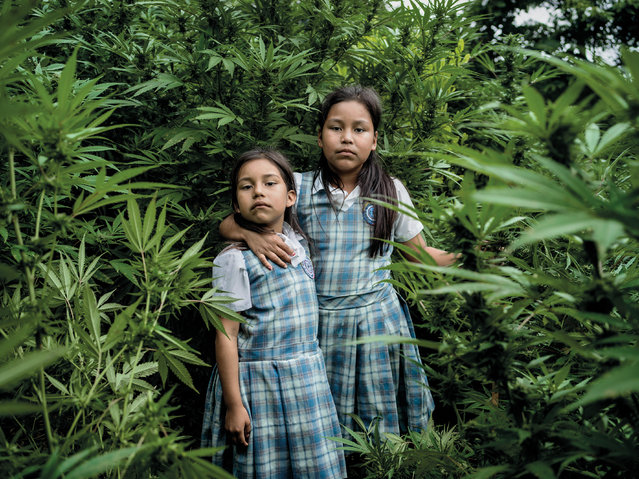
Astri Gisela Yunda López and Feryi Geraldin Yunda López stand in a cannabis field that belongs to their father. Cultivating marijuana risks bringing armed conflict but, as their father Jesús Antonio Yunda explains, without the income from these illegal crops he is unable to pay for the girls’ school uniforms and to put food on the table. (Photo by Mads Nissen/Politiken/The Guardian/Panos Pictures)
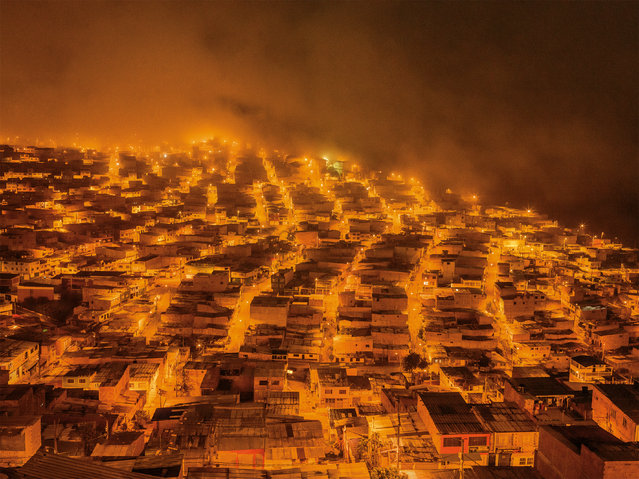
Soacha, south of Bogotá. (Photo by Mads Nissen/Politiken/The Guardian/Panos Pictures)
18 Jun 2018 00:05:00,
post received
0 comments
